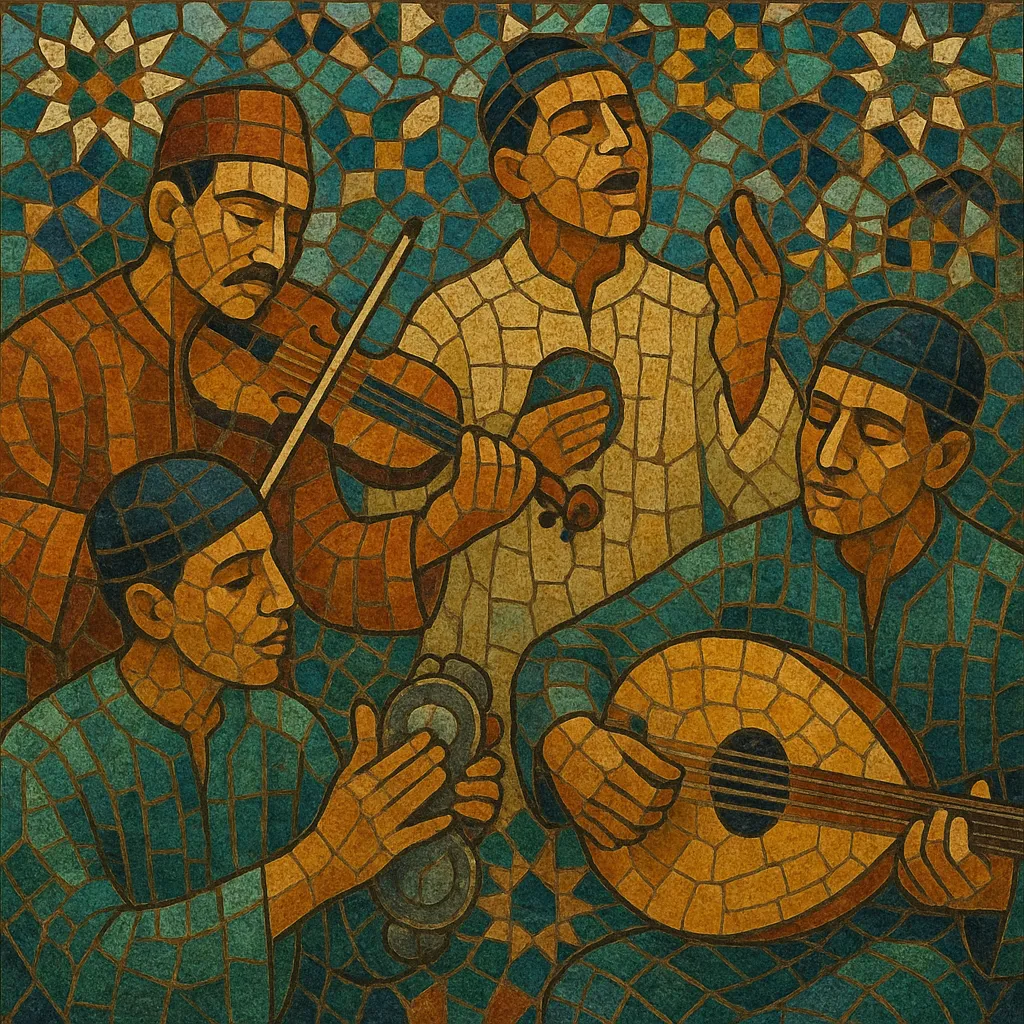Moroccan chaabi is Morocco’s modern popular music, a lively, community-centered style that blends Andalusi melodic heritage, sung poetry (malhun), rural aita vocal traditions, Amazigh rhythmic sensibilities, and Gnawa grooves. It is the soundtrack of weddings and street celebrations, prized for its danceable pulse, catchy refrains, and call-and-response singing.
Typically led by violin (kamanja) and oud with a strong hand-percussion core (bendir, taarija, darbuka), chaabi arrangements ride buoyant 6/8 and 2/4 feels. Lyrics move between romance, satire, and social commentary, delivered with ornamented vocals and spontaneous audience interaction.
Moroccan chaabi crystallized in urban centers like Casablanca and Rabat during the 1940s, when café-orchestras and wedding bands fused Andalusi (al-âla) modal practice with malhun (sung poetry), rural aita song forms, and Amazigh festive rhythms. The introduction of European recording and broadcasting infrastructure helped standardize instrumentation (violin, oud, frame drums) and spread the style across the country.
Post-independence Morocco saw chaabi flourish at public celebrations and private ceremonies. Ensembles expanded, adding banjo or qanun in some regions, and developing hallmark grooves in 6/8 suitable for procession and dance. The performance traditions of shikhates (female aita vocalists/dancers) crossed paths with urban chaabi bands, shaping stagecraft, vocal timbre, and audience engagement.
Cassette culture and national TV popularized star vocalists and violin-led bands. Electric keyboards doubled as portable orchestras, reinforcing the genre’s ear-worm choruses and dance-first aesthetics. Artists wrote contemporary lyrics while retaining modal flavors (hijaz, nahawand) and heterophonic textures.
Today, chaabi remains the backbone of Moroccan weddings, festivals, and street celebrations. It also feeds into pop and rap through sampling of classic riffs and percussion breaks. Touring bands and diaspora communities have taken chaabi to international stages, where it often blends with worldbeat and fusion projects while preserving its participatory, communal spirit.


